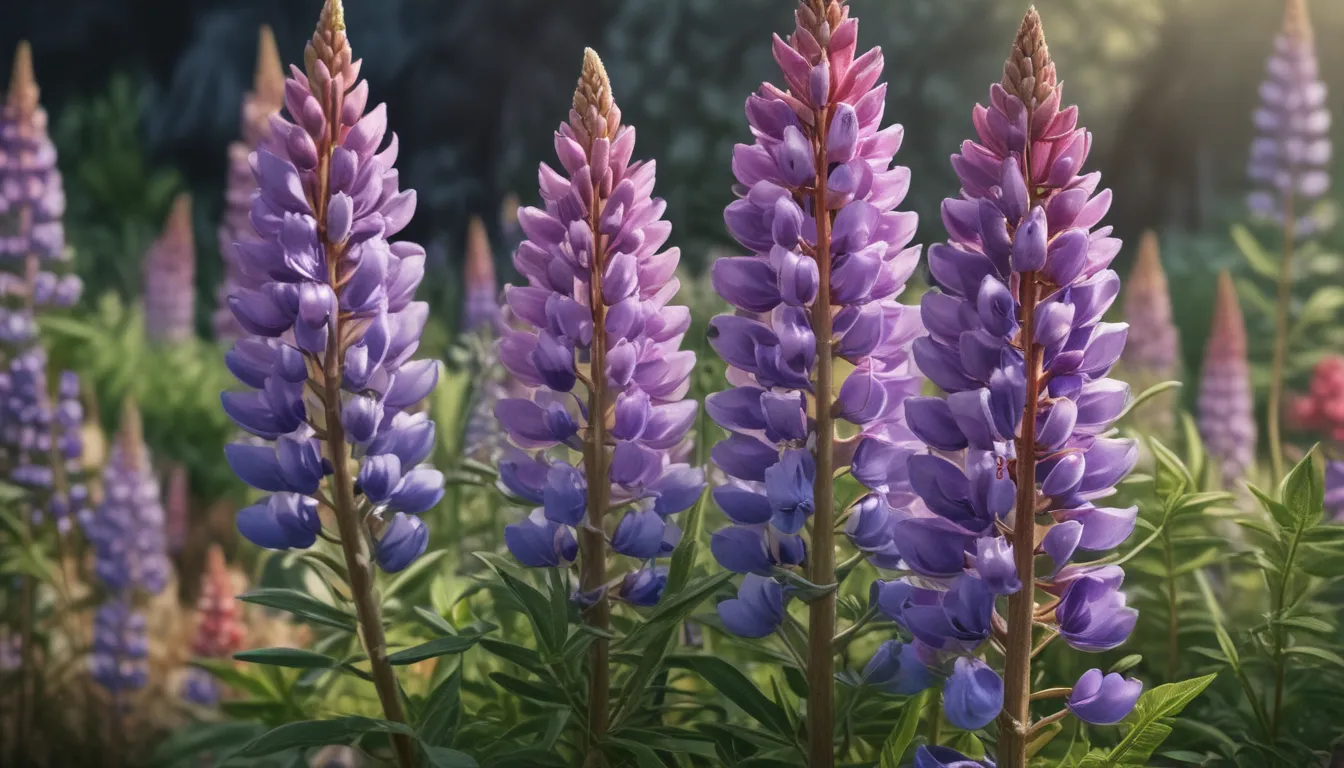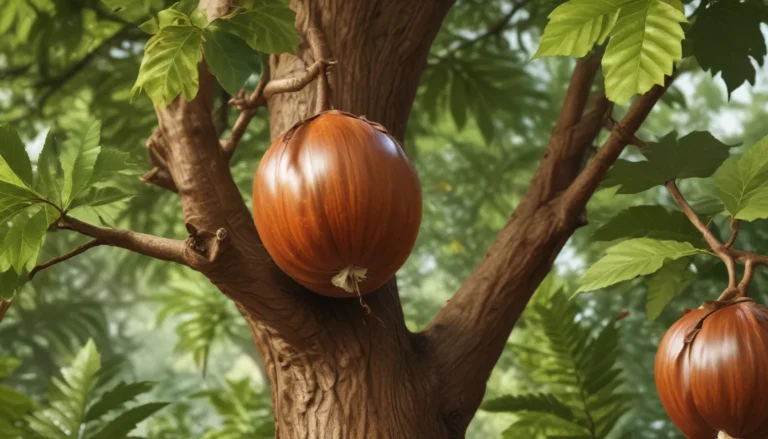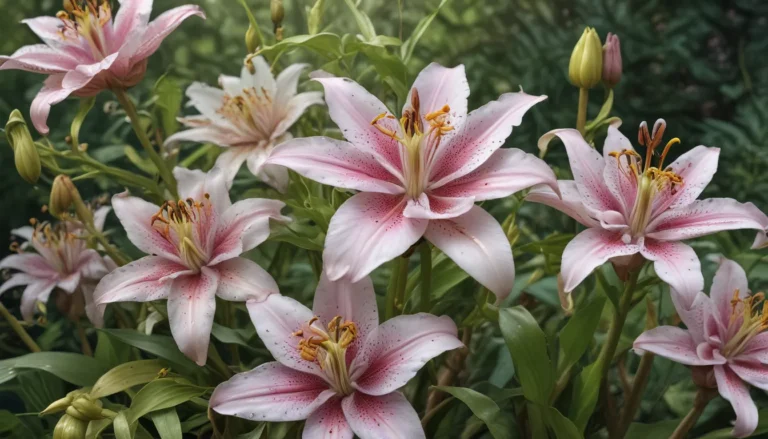The pictures we use in our articles might not show exactly what the words say. We choose these pictures to make you interested in reading more. The pictures work together with the words but don’t take their place. The words still tell you the important facts.
Lupine plants, also known as lupins, are a delightful species that captivate with their vibrant colors and unique characteristics. Originating from North and South America, Europe, and parts of Africa, lupines have become popular for their ornamental beauty and medicinal properties. These plants are famous for their spike-like flowers, available in an array of colors such as purple, pink, white, and yellow. Beyond their visual appeal, lupines possess a wealth of fascinating facts that beckon further exploration. From their historical use in traditional medicine to their ecological significance, here are 18 astonishing facts about lupines that will deepen your admiration for these remarkable plants.
The Colorful World of Lupine
Lupine plants are renowned for their stunning flowers that come in a wide range of colors, including shades of blue, purple, pink, and even bi-colored varieties. These beautiful blooms add a pop of color to any garden or landscape, creating a vibrant and captivating display for all to enjoy.
The Nitrogen-Fixing Wonder
One remarkable fact about lupine is its ability to fix nitrogen in the soil. Through a symbiotic relationship with nitrogen-fixing bacteria, lupine can convert nitrogen from the air into a usable form for other plants. This makes lupine an excellent companion plant for nitrogen-demanding plants, enhancing soil fertility and overall plant health.
Hardy Perennial Charm
Lupine is a hardy perennial plant that can thrive in various climatic conditions. Known for its adaptability and longevity, once established, lupine can flourish for many years with minimal care. Its enduring nature makes it a valuable addition to any garden or landscape.
Imagination in Bloom
In the language of flowers, lupine symbolizes imagination and creativity. With its unique and vibrant flowers, lupine has inspired artists and poets throughout history, making it a popular choice for gardens, floral arrangements, and symbolic gestures of inspiration.
A Haven for Pollinators
The colorful and fragrant flowers of lupine attract a diverse array of pollinators, including bees, butterflies, and hummingbirds. By drawing in these beneficial pollinators, lupine plays a vital role in supporting pollinator populations and promoting biodiversity within the ecosystem.
Medicinal Marvels
Traditionally, lupine has been utilized in herbal medicine for its medicinal properties. Its roots have been employed to address digestive issues, while the flowers and leaves have been used to create teas and ointments for skin ailments. The therapeutic potential of lupine extends beyond its ornamental beauty.
A Pea Family Member
Belonging to the Fabaceae family, also known as the pea family, lupine shares characteristics with other leguminous plants. Its ability to fix nitrogen and produce seeds in pods aligns lupine with its botanical relatives in this diverse plant family.
Protein Powerhouse
Lupine seeds are rich in protein, offering a valuable source of nutrition. Often used as a protein alternative in vegan and vegetarian diets, lupine seeds can be ground into flour or transformed into spreads and protein bars, showcasing the versatility and nutritional benefits of this plant.
The Native Beauty of North America
Lupine is native to North America, with numerous species thriving across the continent. Particularly abundant in regions with well-drained soil and ample sunlight, lupine contributes to the natural beauty and biodiversity of North American ecosystems.
Garden Delight
Due to its vibrant colors and attractive flowers, lupine is a popular choice for gardeners seeking to enhance their outdoor spaces. Whether planted in flower beds, borders, or containers, lupine adds beauty and visual interest to any landscape and is relatively easy to cultivate.
Caterpillar Cuisine
Many species of caterpillars, including the larvae of the endangered Karner blue butterfly, depend on lupine as a food source. By incorporating lupine into your garden, you can support these essential insect species and contribute to the preservation of biodiversity within the ecosystem.
Fertility Booster
As a nitrogen-fixing plant, lupine plays a crucial role in improving soil fertility by increasing the availability of nitrogen for other plants. Often used as a cover crop or green manure, lupine enriches the soil and promotes healthy plant growth in garden settings.
Prolonged Blooming Splendor
Depending on the species, lupine can have a blooming period that lasts several weeks, providing an extended showcase of colorful flowers in the garden. The long-lasting beauty of lupine flowers adds charm and allure to outdoor spaces throughout the blooming season.
Culinary and Cultural Significance
In addition to its ornamental and ecological value, lupine seeds have been used as a food source in various cultures. When properly prepared, lupine seeds can be cooked, roasted, or fermented to create a range of dishes and snacks, showcasing the diverse culinary applications of this versatile plant.
Hummingbird Haven
Due to its nectar-rich flowers, lupine is a favorite of hummingbirds. These enchanting birds are drawn to the bright colors and sweet nectar of lupine flowers, making it a delightful addition to any garden designed to attract and support hummingbird populations.
Drought-Resilient Beauty
Lupine has evolved to thrive in dry conditions and is considered a drought-tolerant plant. Equipped with deep taproots that enable it to access water from deeper soil layers, lupine's resilience in arid environments makes it a valuable addition to water-conscious landscapes.
A Palette of Natural Dyes
The flowers of lupine can be utilized to create natural dyes in a spectrum of vibrant colors. These natural dyes have been employed for centuries to color fabrics and fibers, highlighting lupine's cultural significance and practical applications beyond its visual appeal.
The Everlasting Symbol
Beyond its representation of imagination and creativity, lupine also embodies positivity and happiness. With its vibrant colors and delicate beauty, lupine brings joy and a sense of well-being to those who encounter it, serving as a timeless symbol of optimism and creativity.
In conclusion, lupine, or Lupinus, stands out as a fascinating flowering plant that captivates with its radiant colors and diverse properties. From its role in improving soil fertility to its cultural symbolism, lupine holds a special place in both natural ecosystems and human societies. With its ability to attract pollinators, enhance biodiversity, and offer a range of practical and aesthetic benefits, lupine continues to enchant and inspire all who appreciate its unique charm.
FAQs About Lupine
-
Q: What is Lupine?
A: Lupine is a genus of flowering plants belonging to the family Fabaceae, known for their tall spikes of pea-like flowers across over 200 species. -
Q: Where is Lupine native to?
A: Lupine is native to North and South America, with a prevalent presence in the western United States. -
Q: Can Lupine be grown in gardens?
A: Yes, Lupine is commonly cultivated in gardens for its vibrant blooms. Understanding the specific requirements of the chosen Lupine species is crucial for successful growth. -
Q: Does Lupine attract pollinators?
A: Indeed, Lupine flowers are attractive to a variety of pollinators, including bees, butterflies, and hummingbirds. -
Q: Are all Lupine species blue in color?
A: No, Lupine flowers can display a range of colors, from blue and purple to pink, red, yellow, and white. -
Q: Can Lupine be used as a food source?
A: Some Lupine species have edible seeds that have been incorporated into certain culinary traditions. However, caution is advised as Lupine seeds can be toxic if not prepared correctly. -
Q: What is the cultural significance of Lupine?
A: Lupine holds cultural significance in diverse regions, symbolizing imagination, happiness, and protection. It is even the state flower of Texas, reflecting its varied interpretations and symbolic meanings. -
Q: Can Lupine be used for erosion control?
A: Yes, Lupine's extensive root system makes it an effective plant for stabilizing slopes and preventing soil erosion, showcasing its versatility beyond aesthetics.
As we delve into the enchanting world of lupine, we are reminded of its enduring beauty, ecological importance, and cultural resonance. Whether admired for its vibrant blooms, utilized for its medicinal properties, or celebrated for its role in supporting biodiversity, lupine remains a captivating symbol of nature's diversity and resilience. So, the next time you encounter a lupine plant, take a moment to appreciate its remarkable qualities and the astonishing facts that make it a true wonder of the natural world.
Conclusion
Lupine's appeal lies not only in its visual splendor but also in its multifaceted contributions to ecosystems and human societies. As a colorful and hardy plant that attracts pollinators, symbolizes imagination, and boasts medicinal properties, lupine emerges as a valuable and fascinating addition to any environment. With its ability to improve soil fertility, endure drought conditions, provide natural dyes, and offer sustenance, lupine embodies a harmonious blend of beauty, practicality, and cultural significance. Embrace the wonder of lupine and celebrate its place in the rich tapestry of the natural world.






